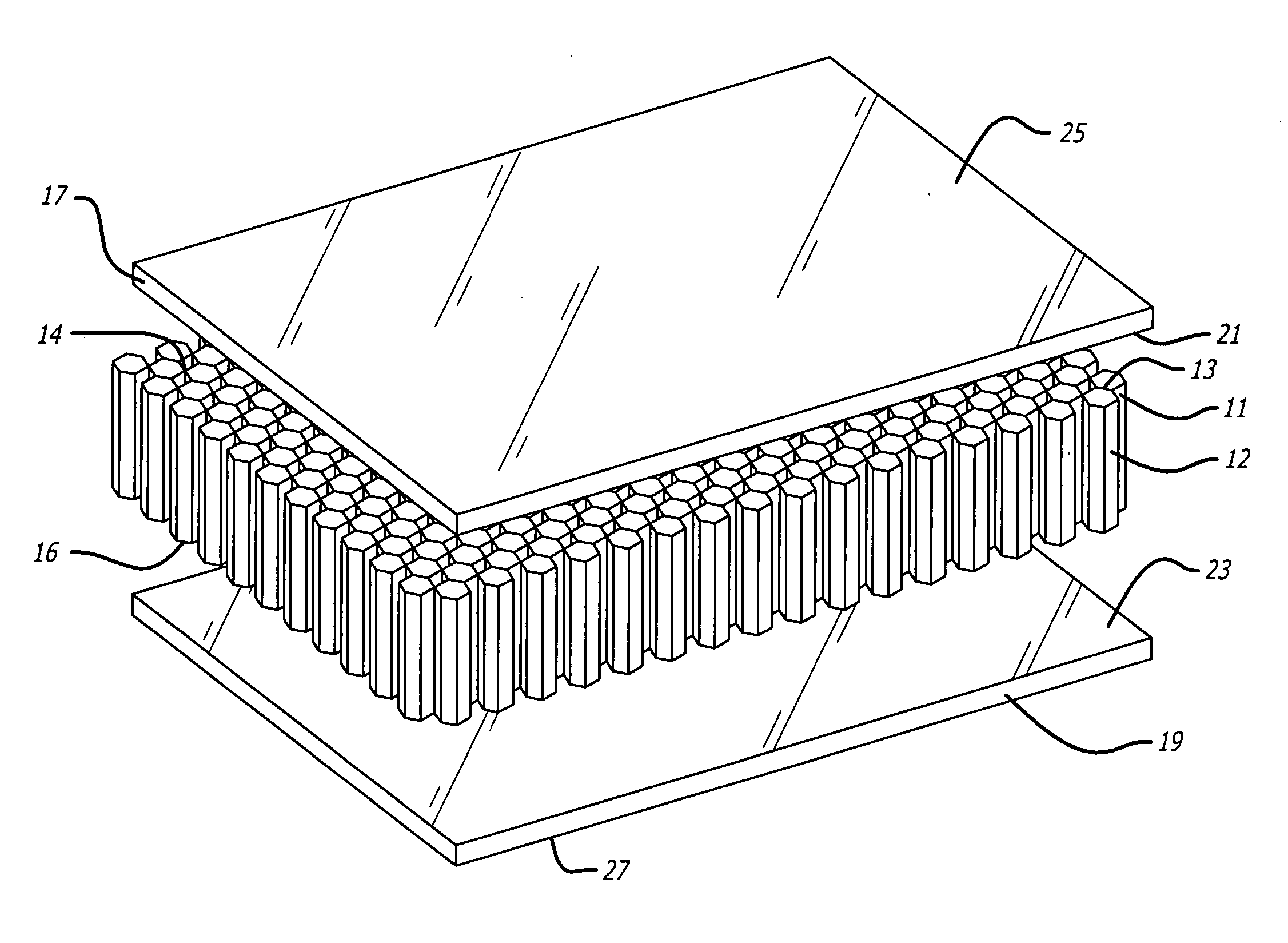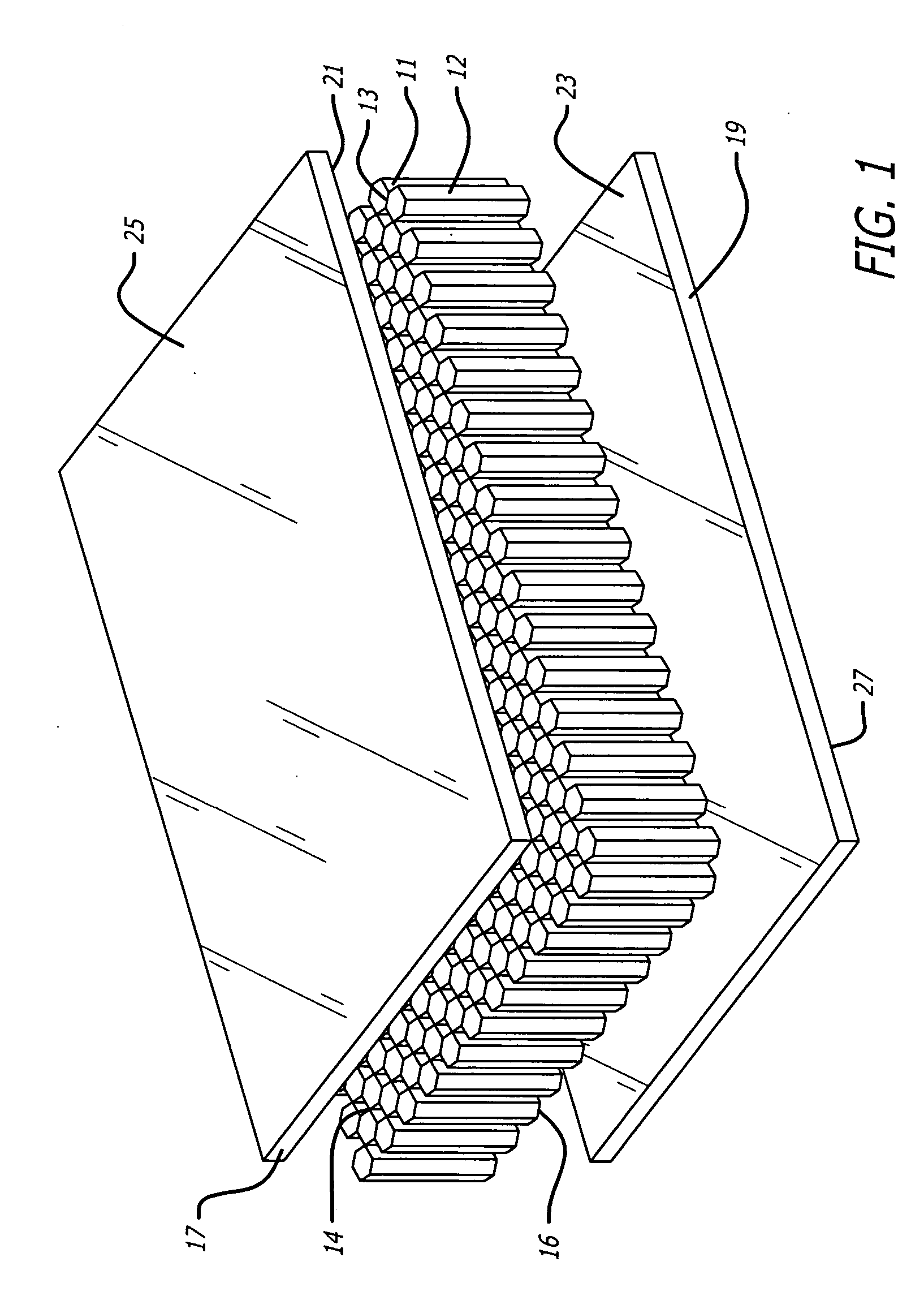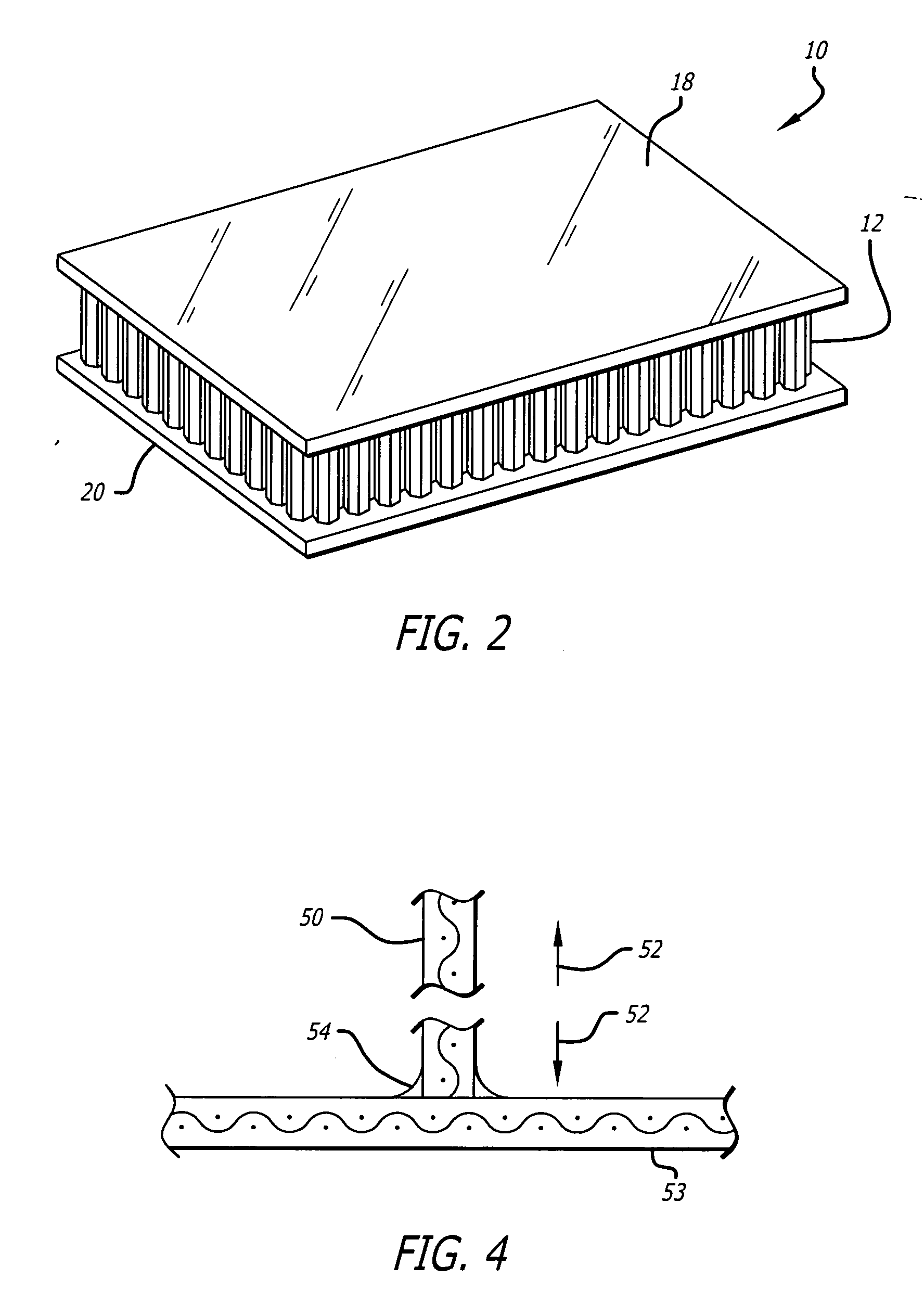Aircraft floor panels using edge coated honeycomb
a technology of honeycomb and aircraft floor, applied in the field of sandwich panels, to achieve the effect of increasing the bonding strength
- Summary
- Abstract
- Description
- Claims
- Application Information
AI Technical Summary
Benefits of technology
Problems solved by technology
Method used
Image
Examples
example 1
[0101] Sandwich panels are prepared in the same manner as Comparative Examples 1 and 2, except that the edges of the honeycomb are coated with an aqueous solution of NYSOL 1020 (also know as ZYTEL FE310018) polyamide adhesive (40 weight percent polyamide) so that depth “D” of the adhesive is between 0.005 inch (0.13 mm) and 0.008 inch (0.20 mm). The adhesive (coating) is applied to the honeycomb edges as follows: 1) a flat and level glass table top is cleaned with a degreasing solvent to remove all debris and contaminants; 2) A Gardner's knife is set on the tabletop and the gap setting at both ends of the knife are adjusted to provide the desired film thickness; 3) The polyamide solution is poured onto the table top parallel to the Gardner's knife and the knife is then dragged across the adhesive with equal pressure on both ends of the knife to form a thin film that is slightly larger than the area of the core; 4) the resulting film is visually inspected to insure that a uniform fil...
example 2
[0102] Sandwich panels were made in the same manner as Example 1 except that the prepreg face sheets or skins were the same as those used in COMPARATIVE EXAMPLE 3. The HRH®10 (8 pound) core was edge coated with the NYSOL 1020 nylon adhesive solution to provide an adhesive loading of 4.3 g / sq. ft. and the depth D of the coating on the core edge was about 0.005 inch (0.13 mm). The peel strength of this panel was 91 in-lbs / 3 in width with structural failure occurring in the honeycomb wall over a substantial portion of the honeycomb and not at the core-skin bond.
example 3
[0103] Sandwich panels were made in the same manner as Example 2 except that HRH®36 (2.5 pcf) core was substituted in place of HRH®10 core. The edges of six different cores were coated with 1.1, 2.3, 3.4, 3.8, 4.0 and 6.2 g / sq. ft. of polyamide adhesive (i.e., NYSOL 1020, 40% solids solution in water, as per Example 1). The resulting panels had peel strengths of 26, 30, 59, 71, 71 and 76 in-lbs / 3 in width, respectively. During the peel tests, the face sheets separated from the core at the bond between the face sheet and the core. Based on this example, it is preferred for this particular type of sandwich panel configuration that the edge of the honeycomb be coated with at least 3.0 g / sq. ft. of polyamide adhesive.
PUM
| Property | Measurement | Unit |
|---|---|---|
| area | aaaaa | aaaaa |
| area | aaaaa | aaaaa |
| thick | aaaaa | aaaaa |
Abstract
Description
Claims
Application Information
 Login to View More
Login to View More - R&D
- Intellectual Property
- Life Sciences
- Materials
- Tech Scout
- Unparalleled Data Quality
- Higher Quality Content
- 60% Fewer Hallucinations
Browse by: Latest US Patents, China's latest patents, Technical Efficacy Thesaurus, Application Domain, Technology Topic, Popular Technical Reports.
© 2025 PatSnap. All rights reserved.Legal|Privacy policy|Modern Slavery Act Transparency Statement|Sitemap|About US| Contact US: help@patsnap.com



